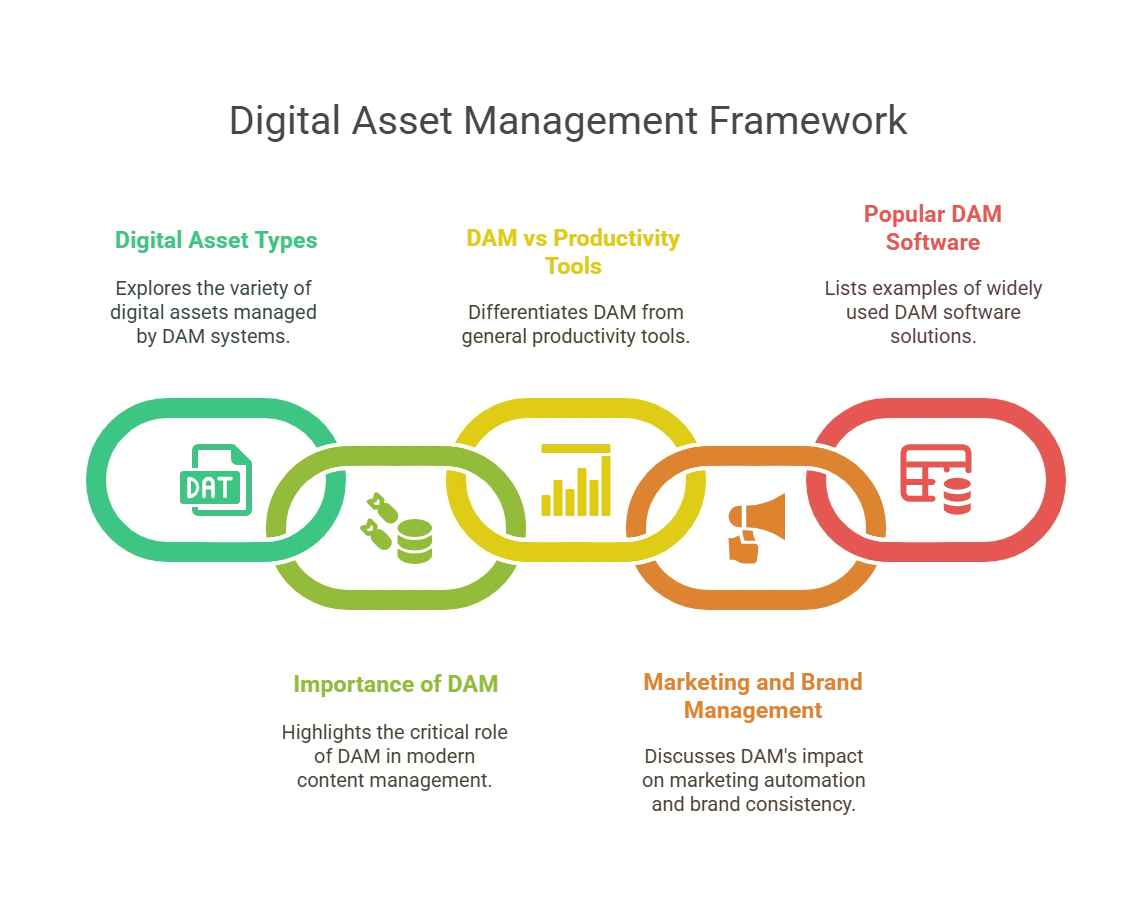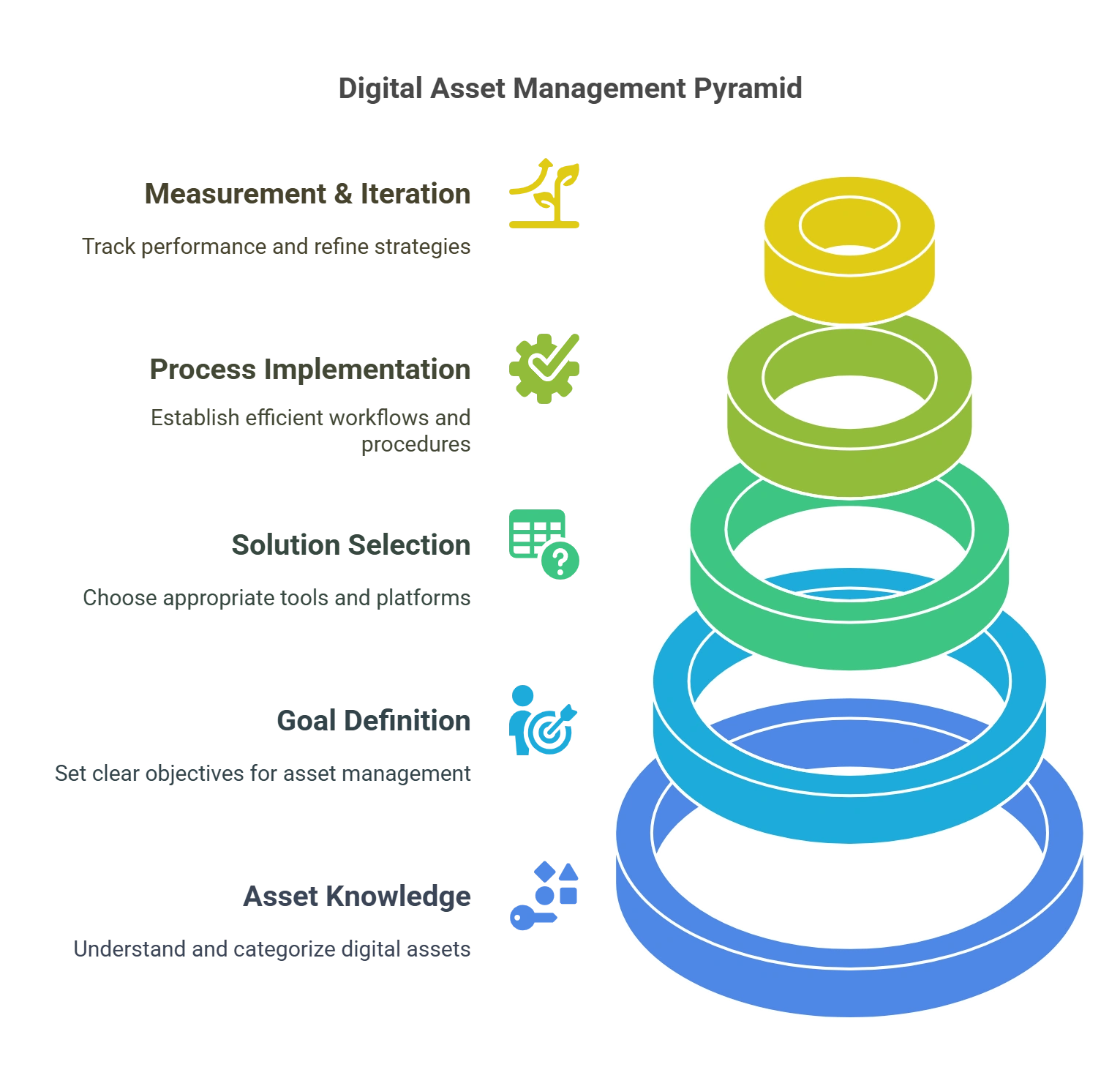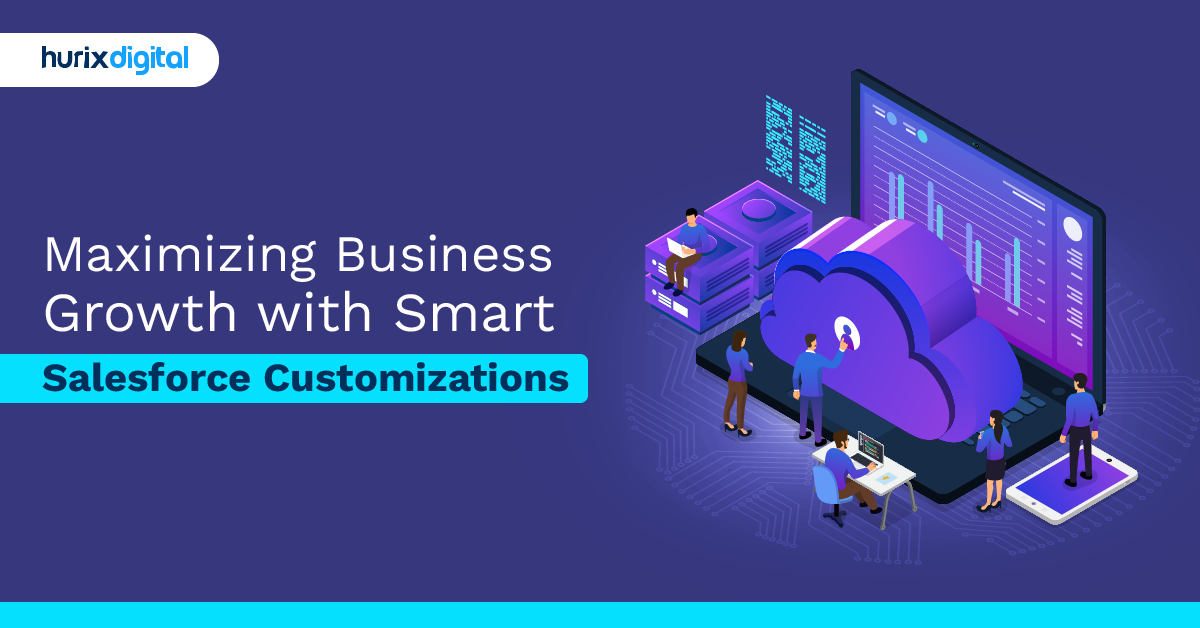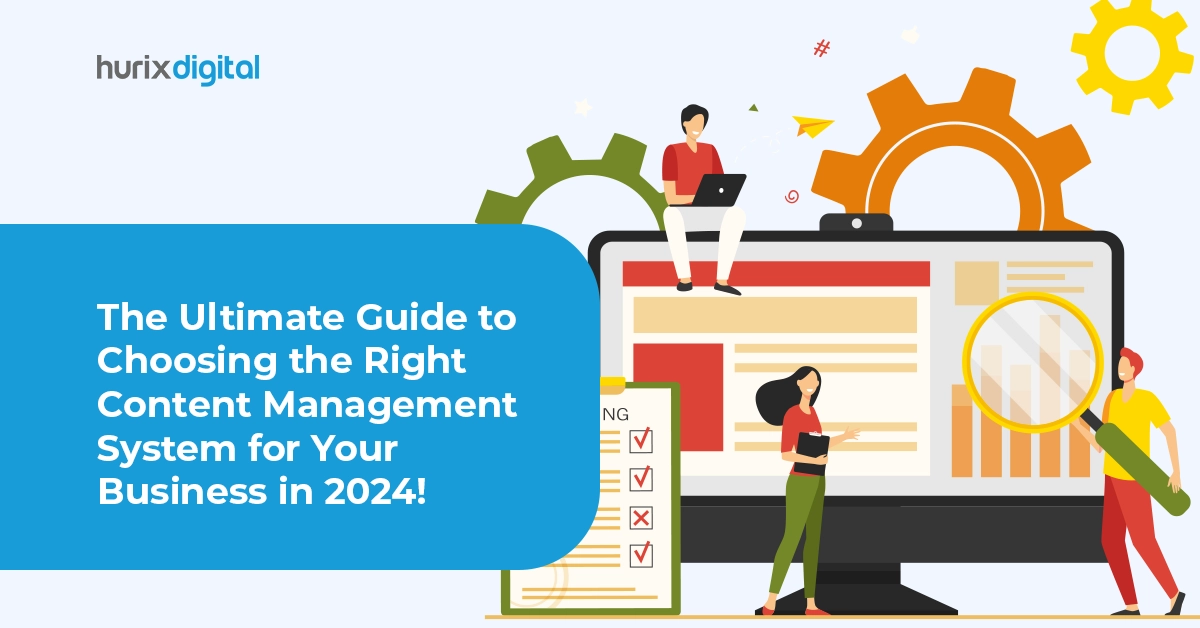
Building a Digital Asset Management Strategy That Delivers ROI
Summarize with:
Digital assets has brought about a pressing need for businesses to maximize their Return on Investment (ROI) while effectively managing these assets. In the face of this dynamic challenge, digital asset management (DAM) tools have emerged as a crucial solution for saving both time and money.
Using digital tools to manage your assets is no longer an innovation; it’s just the most effective solution. Given the current demand, digital asset management tools have been making their presence felt worldwide.
The global digital asset management market was valued at $5.27 billion in 2024 and is projected to reach $10.69 billion by 2029. Investing in DAM software is the first step to making it big.
By streamlining processes, enhancing collaboration, and ensuring the efficient use of resources, DAM tools empower businesses to navigate the digital landscape with agility, resilience, and profitability.
Table of Contents:
- Understanding Digital Asset Management Tools
- What’s a Winning Digital Asset Management Program?
- 5 Key Elements to Building Notable Digital Asset Management Solutions
- Top 5 Ways Digital Asset Management Tools Can Help Maximize ROI
- Wrapping Up

Understanding Digital Asset Management Tools
Digital Asset Management (DAM) uses technology to digitize information management in a business. It helps businesses find a system that efficiently stores and organizes their digital assets. When the time comes, it can also help with effective retrieval and distribution.
1. What are Some Types of Digital Assets?
Digital assets can include any digital files you may have. Whether it is an image, a document, audio, video, or just about any other kind of digital media, any content you have rights over is your digital asset.
2. Why is DAM Key to Content Management today?
Organizations have been employing content management software for years now to maintain a centralized repository of their digital assets. Using digital asset management tools has now enhanced the searchability and discoverability of these assets, thus saving businesses hundreds of man-hours.
3. How are DAM Tools Different from Other Productivity Tools?
DAM tools have interfaces specifically designed to handle digital assets such as images, videos, logos, etc. They offer version control features and the simultaneous pushing of updates across several channels. In short, they are made for this very specific job of handling digital media.
DAM software can be seen as a part of a larger project management system. While project management software has a much larger scope of file management, collaborative workspaces, group calendars, etc., DAM software will specifically focus on digital assets throughout their lifecycle.
4. Does DAM Help with Marketing Automation and Brand Management as Well?
Unlike traditional content management software, DAM tools can enforce automatic asset updates. This mechanism can be used to reinforce brand guidelines, pushing consistent and on-brand content across several channels.
5. What are Some Popular Examples of DAM Software?
- Adobe Experience Manager (AEM): This enterprise solution by Adobe can deliver content seamlessly across multiple digital channels.
- Brandfolder: One of the highest-rated digital asset management platforms, this is a popular choice with enterprise companies.
- Wedia: It is a cloud-based digital asset management platform that specializes in the management and distribution of assets for marketers.
- Daminion: This popular DAM system can organize, secure, and retrieve a business’s digital assets in a jiffy.
- Nuxeo: It can help manage complex digital assets for large enterprises.
- Box: It is a cloud content management and file-sharing service that provides a secure and scalable content-sharing option.
- Mediavalet: Another cloud-based DAM aimed at marketing teams to help easily manage, collaborate on, and distribute their digital assets.
- Monday.com: This work-operating system enables organizations to build custom workflow apps in a code-free environment.
What’s a Winning Digital Asset Management Program?
A DAM system acts as a central repository for all your digital content, providing organized storage, efficient retrieval, and streamlined workflows. You can harness the full potential of digital assets through a well-designed DAM strategy which ensures your organization can:
- Organize and centralize your digital assets for easy access and retrieval.
- Improve collaboration and efficiency by streamlining workflows and sharing assets seamlessly.
- Protect and secure sensitive information through robust access controls and data governance.
- Optimize asset usage and ROI by maximizing the value of your digital assets.
However, building a successful DAM strategy requires more than just purchasing a software solution. It demands a strategic approach, careful planning, and ongoing commitment. It’s noteworthy that businesses with a DAM solution experience a 25% increase in marketing ROI.
Simply implementing a DAM solution isn’t enough. To truly reveal its potential and achieve significant ROI, you need a well-defined IT management strategy. This strategy serves as your roadmap, outlining the goals, processes, and technologies needed to manage your content effectively.

5 Key Elements to Building Notable Digital Asset Management Solutions
In today’s age and time, your digital assets are strategic weapons. A well-defined DAM strategy helps you wield them effectively, boosting efficiency, brand consistency, and, ultimately, business success. Here are the five key elements of a successful DAM strategy:
1. Know Your Assets
In the context of DAM, it’s essential to understand what constitutes your assets, from media files to brand materials. By comprehensively knowing and categorizing these, you lay a solid foundation for a successful DAM strategy.
- Knowing your assets is the first step in understanding your current state. Conduct a thorough audit of your digital assets, identifying their types, locations, formats, and usage permissions. This provides a crucial baseline and helps determine your DAM requirements.
- Statistics point to the importance of thorough inventorying. A Gartner study reveals that 40% of organizations lack a good understanding of their digital assets, leaving them vulnerable to security risks, compliance issues, and operational inefficiencies.
2. Define Your Goals
Defining clear goals is a fundamental step toward creating an effective digital asset management strategy; this allows you to align your efforts and resources with your organization’s overarching objectives, optimizing your DAM program’s value and relevance.
- What are the objectives behind your DAM implementation? Enhanced content accessibility for marketing teams? Streamlined collaboration across departments? Or, perhaps, more efficient content creation and approval processes? Defining these goals helps focus your DAM strategy and align it with your business objectives.
- Consider the potential financial benefits of DAM. Businesses can achieve a 259% increase in ROI by implementing a DAM solution driven by cost savings, improved productivity, and increased revenue.
3. Choose the Right Solution
Selecting the optimal DAM solution involves careful consideration of factors. Finding the right fit is essential for the seamless implementation of your digital asset management strategy and long-term success.
- Evaluate features, scalability, security, pricing, and vendor support. Assess your specific needs and choose a solution that can adapt to your growth and evolving requirements.
- The global DAM market is projected to reach USD 9.12 billion by 2030, driven by the increasing demand for content management solutions. This indicates a diverse and competitive landscape that requires careful research before choosing a vendor.
4. Implement Effective Processes
Even with the best DAM solution, well-defined processes are crucial.
- Clear guidelines for uploading, tagging, and metadata management, alongside practices for user permissions and access workflows, ensure the accuracy, discoverability, and security of your assets.
- Change management plays a crucial role in DAM’s success. Address employees’ concerns, provide training, and create support systems to ensure smooth adoption and optimal usage. This proactive approach minimizes resistance and maximizes productivity.
5. Measure and Iterate
To ensure your Digital Asset Management (DAM) strategy is not only effective but also adaptable to changing requirements, it’s vital to monitor key performance indicators continually:
- Track asset usage, search success rates, user adoption, and ROI. These insights inform ongoing optimization and ensure your strategy aligns with your evolving needs.
- Remember, DAM is an ongoing journey. Continuously evaluate your strategy, gather user feedback, and adapt your approach to maximize the value of your digital assets.

Top 5 Ways Digital Asset Management Tools Can Help Maximize ROI
You should invest in digital asset management tools for their convenience and because they can help you save a lot of time and money. Whatever little you invest in traditional content management software, if you choose to upgrade to DAM software, the return on investment (ROI) is high enough to be worth it.
Here are 5 ways digital asset management tools can help maximize ROI by helping your business save time and money:
1. Accelerated File Transfer
Image and video files today are of incredibly high quality. They can hold much information, preserving even the smallest details. But this clarity comes at a price: the files have grown to large gigabyte sizes.
Processing and transferring such large files can be extremely time-consuming and can heavily impact a project’s timeline. DAM tools come equipped with accelerated file transfer solutions where a large file is transferred in multi-part chunks with uncompromised security. This can greatly improve a team’s productivity.
2. Make External Collaboration Easy
Easy file sharing and a central media repository make collaboration a piece of cake. Every stakeholder can access files simultaneously with easily retrievable and manageable digital assets.
This makes real-time coordination much less work and, overall, reduces the time taken to complete collaborative tasks.
3. Enhanced Asset Discovery with AI-driven Metadata
DAM software and platforms can automate the painstaking task of tagging, organizing, and distributing media content. Businesses have traditionally spent hours of manual work ensuring the management of digital assets.
With AI, DAM tools can auto-tag content according to requirements and search it instantaneously based on details like color or description.
4. Increased Scalability at a Fraction of the Price
DAM software and tools are usually mounted on cloud platforms. It means that you can leverage the scalability of a cloud storage system by spending a fraction of what you would on building similar infrastructure.
Furthermore, this provides the flexibility of accessing digital assets across platforms and globally without incurring additional overhead.
5. The Power of Automation
DAM systems come with extension points, which you can leverage across platforms to automate business-specific tasks. The reduced manual effort led to reduced labor costs and an improved time to market.
Wrapping Up
You can develop a digital asset management strategy that helps you unlock the full potential of your content. From improved efficiency and collaboration to better branding and customer engagement, a well-crafted DAM strategy can significantly benefit your organization.
Are you ready to transform your content management and know the true potential of your digital assets?
Head over to Hurix Digital and explore our robust DAM solutions designed to empower your business with streamlined workflows, centralized control, and actionable insights. Our team of experts can help you choose the perfect solution, guide you through implementation, and support you every step of the way.
Contact us for more information today!
Summarize with:

Vice President & SBU Head –
Delivery at Hurix Technology, based in Mumbai. With extensive experience leading delivery and technology teams, he excels at scaling operations, optimizing workflows, and ensuring top-tier service quality. Ravi drives cross-functional collaboration to deliver robust digital learning solutions and client satisfaction
 Upcoming Masterclass | Build an Army of Brand Evangelists using Training & Development | November 20th, 8:30 AM PDT | 11:30 AM EDT | 10:00 PM IST
Upcoming Masterclass | Build an Army of Brand Evangelists using Training & Development | November 20th, 8:30 AM PDT | 11:30 AM EDT | 10:00 PM IST





